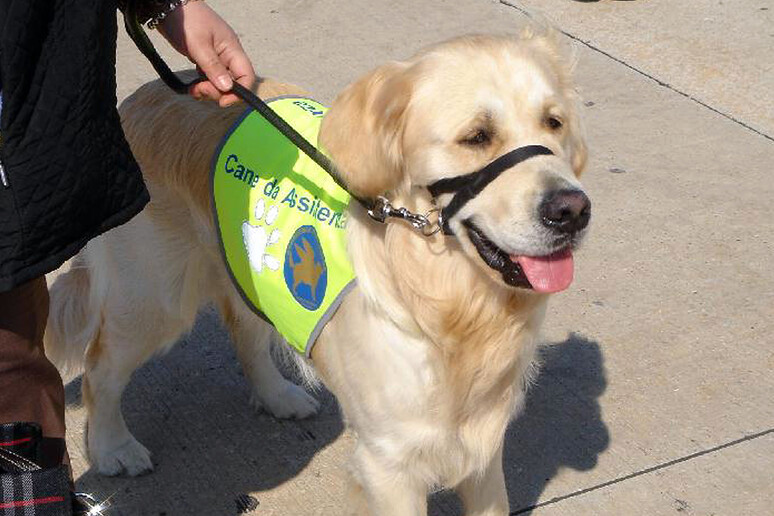in the treatment of illnesses.
Animal-assisted Therapy (AAT), also known as pet therapy or
zootherapy, is a method that sees patients undergo physical,
social, sensorial and psychological rehabilitation with the help
of animals: a practice that is recognised by the CFM (Federal
Council of Medicine) and the COFFITO (Federal Council of
Physiotherapy and Occupational Therapy).
"Pet therapy is a method in which an animal is used as a
mediator in the therapeutic process," Liana Santos, the director
of the Gati Ippoterapia clinic, explained to ANSA.
"For example, there is dog-assisted therapy, in which
professionals and the animal have a direct influence on the
emotions, relations and situations of conflict of the patient.
"Horses are used in hippotherapy within an interdisciplinary
framework that involves horse riding, health interventions and
education to achieve motor and psychological development in
people who have special needs".
A course of medical treatment with animals features a
specific programme and is conducted with a therapist - a
physiotherapist, a speech therapist or another professional - to
direct the exercises.
"The horse is used as an assistant in hippotherapy for three
reasons: cultural, because it is an animal associated with
strength, power, self-confidence and has a strong image in
social terms; psychological, because the patient gets to ride
and control an animal that weighs a lot more than him or her;
and simple biomechanics - it is physiotherapy," Santos said.
Animal-assisted therapy usually requires the involvement of
the patient's whole body, thus contributing to the development
of muscle mass and the improvement of the motor coordination and
balance of disabled people.
The animals also stimulate brain activity, the release of
hormones and they even bring down blood pressure.
"Children project themselves on to the animal," added Santos.
"This gives fresh value to affection and their sense of
responsibility - they have to feed them, work together, get
dressed and undressed".
TECHNOLOGY
Assistance technology is getting more widely recognized and
is considered one of the main areas for the application of
artificial intelligence.
It is currently possible to program electronic devices to
help people with special needs and apps downloaded onto tablets
and cell phones can be used too.
This year a series of technological developments for the
sector will be presented at the International Fair of
Technologies for Rehabilitation, Inclusion and Accessibility
(Reatech), which takes place in Sao Paulo June 13-16. The event
has been organised by Cipa Fiera Milano.
At Reatech, Gati Ippoterapia will present "communication
cards created to stimulate language, starting from assisted
therapy with animals".
This system was designed for tablets and smart phones and it
can feature the inclusion of symbols and customised voices and
sounds that can also be the sounds produced by the animals
themselves. The patients can use the technology in their
relations with the animals, starting from this data.
According to Santos, the device can be used in therapy
assisted by horse and other animals - dogs, birds, reptiles,
rodents - and it was created, above all, for children that do
not talk or have communication problems.
"We are working on a technology that can aid therapy with
animals," said Santos.
"Children recognise emojis and a fusion can take place on the
basis of this.
"There are lots of children who don't know how to tie up
their shoe laces, but they are really good with computers and
video games".
In addition to these cards, there are also other facilitation
technologies than can aid pet therapy, like leads for guide dogs
that can feature emojis and letters to help with literacy and
the use of language to optimise communication.
Another innovation with be presented by Andrea Werner, the
author of the book 'Lagarta Vira Pupa' (the caterpillar becomes
chrysalis), as part of the pet course that will take place
during the event. She will talk about her experiences and
illustrate practical activities.
For its part, Minas Gerais's Geraes Tecnologia Assistiva
startup will present an innovative system called TiX that makes
it possible for people with any from of motor restriction to
control a computer. The device has the same functions as a mouse
or a keyboard and can even be controlled by the blink of an eye.
ALL RIGHTS RESERVED © Copyright ANSA











